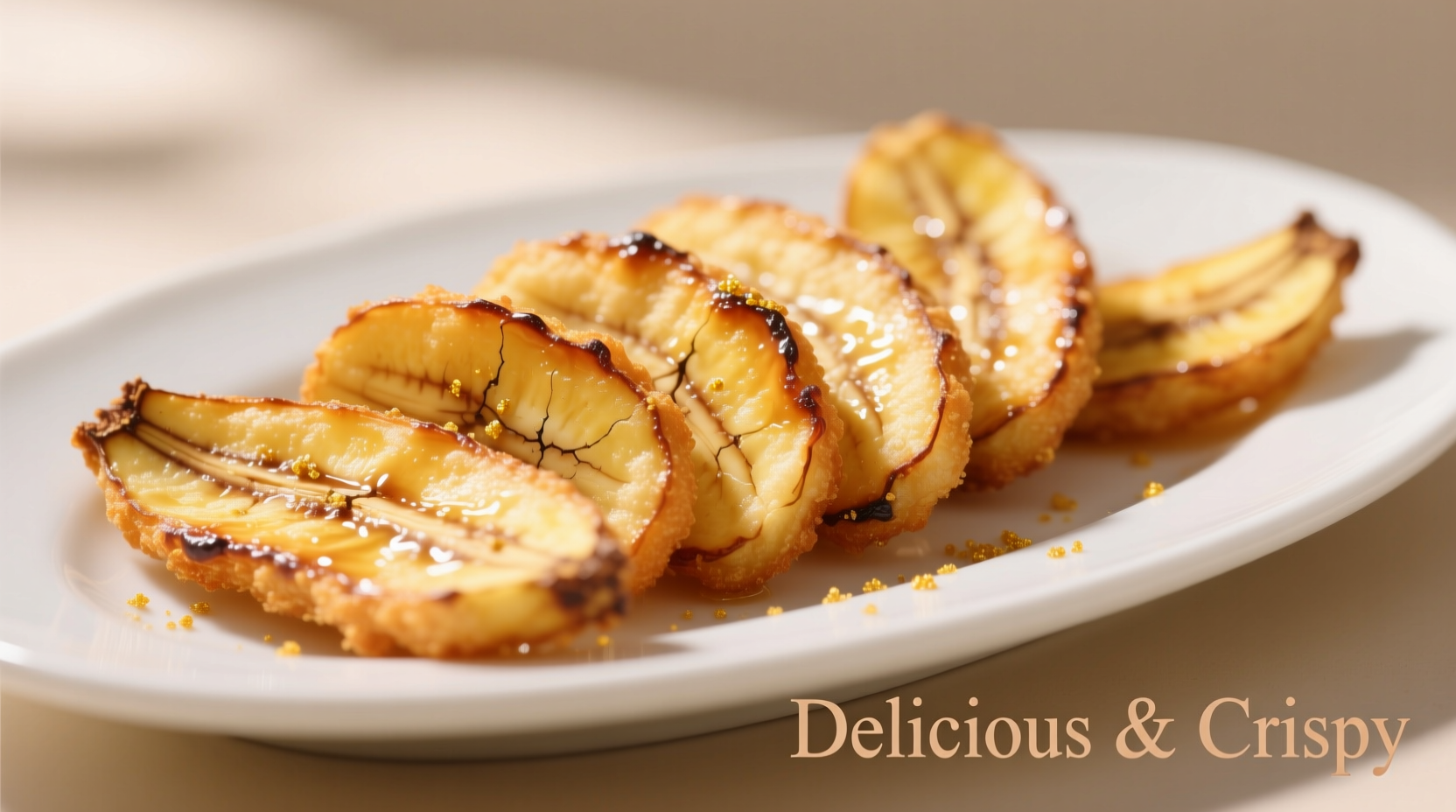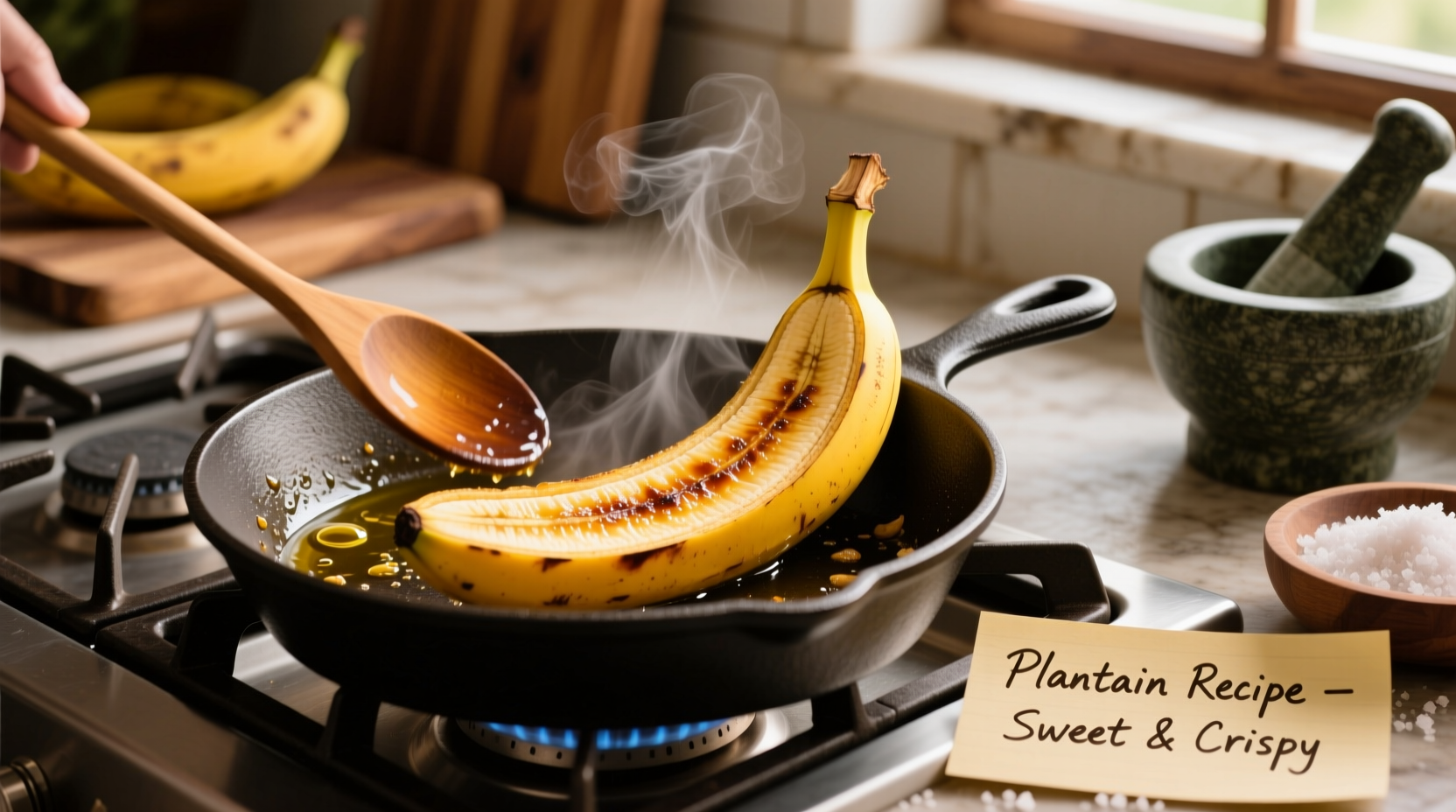Plantains aren't just oversized bananas - they're a culinary cornerstone across tropical regions with unique preparation requirements. Whether you're working with firm green plantains for savory dishes or fully blackened sweet varieties, proper cooking technique makes all the difference between rubbery disappointment and golden perfection. This guide delivers professional-level plantain preparation methods that home cooks can master immediately.
Understanding Plantain Ripeness: Your Cooking Foundation
The color of your plantain isn't just cosmetic - it determines your entire cooking approach. Unlike bananas, plantains require specific preparation based on their ripeness stage, which follows a predictable timeline:
| Ripeness Stage | Appearance | Texture/Flavor | Best Cooking Methods |
|---|---|---|---|
| Green (Unripe) | Solid green skin | Firm, starchy, neutral flavor | Frying (tostones), boiling, mashing |
| Yellow (Semi-Ripe) | Mostly yellow with black spots | Softer, developing sweetness | Frying, baking, grilling |
| Black (Fully Ripe) | Completely black skin | Very soft, intensely sweet | Frying (maduros), baking, caramelizing |
According to agricultural research from the Food and Agriculture Organization of the United Nations, plantains progress through these stages over 2-3 weeks at room temperature. Understanding where your plantain falls on this spectrum prevents common cooking disasters - trying to make sweet maduros from green plantains results in inedible starchiness, while attempting tostones with black plantains creates mush.
Essential Preparation Techniques
Peeling plantains requires different approaches depending on ripeness. For green plantains, cut both ends, make a shallow lengthwise slit through the skin, then gently pry open with your fingers. The skin of ripe plantains often peels like bananas, but black plantains may require careful handling as the flesh becomes extremely soft.
Slicing technique dramatically affects cooking results. For even cooking:
- Use a sharp chef's knife on a stable cutting board
- For frying: Cut 1/2-inch thick slices for maduros or 3/4-inch thick for tostones
- For baking: Slice on a diagonal for maximum surface area
- Immediately submerge cut plantains in cold water with lemon juice to prevent oxidation

Mastering Plantain Cooking Methods
Frying Plantains: The Gold Standard
Frying delivers the crispiest texture and best caramelization. For perfect results:
- Heat neutral oil (like canola or vegetable) to 350°F (175°C) in a heavy skillet
- Dry plantain slices thoroughly before adding to hot oil
- Fry in single layer without crowding (3-4 minutes per side for yellow plantains)
- For tostones (twice-fried): After first fry, flatten with tostonera or bottom of glass, then refry
- Drain on paper towels and season immediately
Food safety experts at the USDA Food Safety and Inspection Service emphasize maintaining proper oil temperature - below 325°F creates greasy plantains, while above 375°F causes burning before interior cooks through. The ideal temperature ensures even cooking without excessive oil absorption.
Baking Plantains: Healthier Alternative
For oil-free preparation that still delivers caramelization:
- Preheat oven to 400°F (200°C)
- Toss plantain slices with 1 tsp oil and desired seasonings
- Arrange in single layer on parchment-lined baking sheet
- Bake 20-25 minutes, flipping halfway through
- For black plantains: Reduce time to 15-20 minutes to prevent burning
Grilling Plantains: Smoky Flavor Enhancement
Perfect for outdoor cooking season:
- Peel and cut into 3-inch lengths
- Score diagonally for better heat penetration
- Brush with oil and grill over medium heat
- Rotate every 3-4 minutes until caramelized (12-15 minutes total)
- Best for yellow-ripe plantains - green may remain hard, black may fall apart
Troubleshooting Common Plantain Cooking Problems
Even experienced cooks encounter these issues. Here's how to fix them:
- Plantains sticking to pan: Ensure oil is properly heated before adding plantains. A drop of water should sizzle immediately. Use sufficient oil depth (1/2 inch minimum).
- Burning before cooking through: Lower heat and extend cooking time. Green plantains need slower cooking to transform starches properly.
- Mushy texture: Overripe plantains used for savory preparations. Match ripeness to cooking method - green for savory, black for sweet.
- Lack of caramelization: Insufficient cooking time or temperature. Plantains need proper heat exposure to develop natural sugars.
Recipe Ideas by Ripeness Stage
Green Plantain Creations
These starchy plantains work like potatoes:
- Tostones: Twice-fried smashed plantains with garlic and salt
- Mofongo: Puerto Rican specialty with fried green plantains, garlic, and pork cracklings
- Plantain chips: Thinly sliced and baked or fried until crisp
Yellow Plantain Versatility
Perfect balance of starch and sweetness:
- Grilled plantains with cilantro-lime crema
- Baked plantain fries with smoked paprika
- Plantain and black bean tacos
Black Plantain Indulgences
Maximize natural sweetness:
- Maduros: Classic sweet fried plantains with cinnamon
- Caramelized plantain dessert: Pan-fried with butter and brown sugar
- Plantain bread: Baked sweet bread similar to banana bread
Pro Tips for Perfect Plantains Every Time
- Always season immediately after cooking when plantains are still hot
- For extra crispiness, add 1 tablespoon cornstarch to soaking water for green plantains
- Black plantains cook faster - watch carefully to prevent burning
- Leftovers reheat well in air fryer at 350°F for 3-4 minutes
- Store unripe plantains at room temperature; refrigerate only when fully ripe











 浙公网安备
33010002000092号
浙公网安备
33010002000092号 浙B2-20120091-4
浙B2-20120091-4